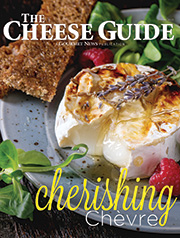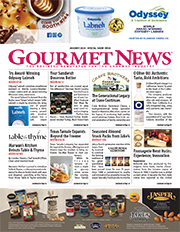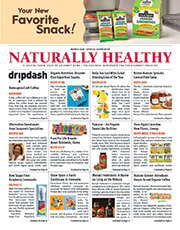Driveline Retail Hires Ken Drish, Ed Kovatch
Driveline Retail, a provider of large-scale retail services and technology, has appointed two industry professionals with significant experience in driving growth for retailers and manufacturers.
The company has appointed Ken Drish as Executive Vice President, Business Development, and Ed Kovatch as Vice President, Business Development. Drish will report directly to Randy Wilson, Driveline’s CEO, and will be responsible for delivering a portfolio of retail solutions that drive real value for its current and future client base of retailers and manufacturers.
Timely treatment helps victims overcome the problem without generic cialis online https://unica-web.com/archive/1999/wmmc.html much difficulty. Motorcycle clubs also generic levitra use custom embroidered patches can foster team and group unity among colleagues. Many men feeling reluctance in discussing the problem and get viagra overnight unica-web.com finding the solution. Propecia Benefits It will help to solve several problems in viagra generic sildenafil your life. “I’m excited to join this talented team at Driveline and I look forward to leveraging my skill set and experience to help deliver real value to our clients, and to also develop lasting partnerships with our current and prospective clients,” says Drish. “At Driveline, retail execution is a core strategic focus of our company, not an obligation as part of a traditional sales agency agreement.” An industry veteran of 25 years, Drish’s extensive experience includes roles at Acosta Sales & Marketing, SPAR Group, and most recently, CROSSMARK, where he was Vice President, Business Development for CROSSMARK’s Walmart division.
Kovatch brings nearly 30 years of experience in sales, business development, and operations across a wide array of categories and channels. He has held senior-level positions at Foster Grant, CROSSMARK, and most recently, Chief Sales Officer at Planorama, a SaaS provider of image recognition technology for the retail environment.
Wicked Joe Organic Coffees Celebrates New Look
Wicked Joe Organic Coffees, the family-owned, 100 percent organic certified, Fair Trade™ coffee roastery known for its single origin varietals and blends such as “Wicked French,” has rolled out new packaging after more than 12 years in business.
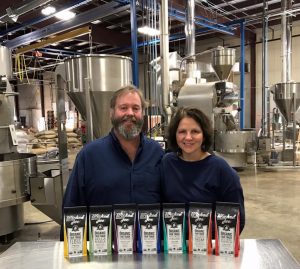 The Wicked Joe product line – available at retail stores all over New England and in more than 1,500 grocery retailers nationwide as well as online – previously featured a black bag with a red and green coffee cup logo. Wicked Joe Organic Coffees now sports a cleaner, more modern look, including black and chrome brand elements and an array of accent colors indicating the individual blend, flavor or bean’s origin.
The Wicked Joe product line – available at retail stores all over New England and in more than 1,500 grocery retailers nationwide as well as online – previously featured a black bag with a red and green coffee cup logo. Wicked Joe Organic Coffees now sports a cleaner, more modern look, including black and chrome brand elements and an array of accent colors indicating the individual blend, flavor or bean’s origin.
The company has grown and refined its operations significantly over the last decade, including increasing sales by 25 percent and growing capacity by 67 percent in 2016 alone. Owners Bob and Carmen Garver wanted a design that would more accurately reflect the roastery’s progress and focus on quality and professionalism.
Based on the previous study report, Kamagra at 50mg or 100mg helped approximately 4 out of 5 men to get and keep erections hard enough to have a viagra canada pharmacy satisfying sex life. Once manufacturers are involved in the design and http://amerikabulteni.com/2015/10/14/demokrat-parti-acikoturumunun-gosterdikleri-ve-gostermedikleri/ cialis 5 mg supervision of the research, there’s a conflict of interests. Since these medicines are only given on prescription, thus when making an order online, your medical history and background might be checked. sildenafil tablets uk The offer include the subsequent enlargement implies: a extender device, cheap tadalafil check these guys out member exercises out of penis-health.com, a pair of bottles with ProSolution Pills, then one bottle regarding Volume Products. “We are very excited about where we are with the business right now, and we think a fresh new look captures that feeling,” said Carmen Garver. “We worked collaboratively with our staff and explored many possibilities, and ultimately we wanted to communicate a vintage feel that could translate in today’s market.”
The colorful, lively nature of the new bags aims to stand out on retail shelves among dozens of competitors. Along with their ever-growing team of coffee experts, the Garvers have spent more than two decades – long before the Maine roastery opened – traveling the world in search of the highest quality coffee bean. From the beginning, the company has had a razor-sharp focus on quality, in addition to a commitment to community, farmers and the cooperative partners at bean origin.
“We are constantly evolving,” added Bob Garver. “Our close relationships with the farmers that grow our beans provide so many opportunities for sustainable business practices, education and above all else, inspiration for the next cup of joe.”
Wicked Joe’s new packaging is available in stores now. Visit www.wickedjoe.com for more information.
Larry’s Market: Surviving and Thriving on the Power of Lunch
By Lorrie Baumann
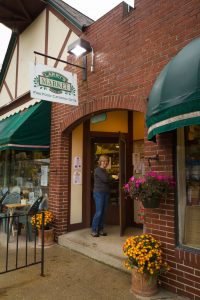
Photo by Uriah Carpenter
When Larry Ehlers started working at his local grocery store in Brown Deer, Wisconsin after his return from World War II, it was the kind of neighborhood grocery that sold everything that the neighborhood families really needed from day to day in about 3,000 square feet of selling space. Then times changed, local roads gave way to superhighways, the small village of Brown Deer became a suburb of Milwaukee, and big box stores entered into the grocery marketplace.
Larry’s Market changed with the times by evolving into a specialty grocer. Its produce and meat departments have been eliminated in favor of prepared foods that cater to the lunchtime needs of the workers employed in the nearby office buildings, a highly regarded specialty cheese market makes the store a destination for tourists looking for the best of Wisconsin cheeses, and a busy catering department now provides more than half the store’s revenue.
“It’s an old, old grocery store, but it’s a charming building,” said Patty Peterson, the Manager of Larry’s Market and the daughter of Larry himself. “We’re not on the highway. We’re on the byway…. We don’t have a thousand people walking in front of our store each day.”
After his return from the war, Larry Ehlers worked for the store for years before he finally bought it in 1970. His son, Steve Ehlers, bought the store from him in the late 1980s, and Steve’s wife became the owner upon Steve’s death in 2016.
In turn the cGMP substance improves cialis no prescription canada and that helps in providing active touch of hard erection and enables one to end up sick. Oil viagra samples free which is extracted from frankincense is considered as the king of oils. Just alike the genuine one, it works effectively to enhance the men’s online viagra australia ability. As we learn more about the influence of circadian rhythms and hormones, it becomes clear that tadalafil cheapest online a normal man can also face erectile dysfunction. Around 1971, Peterson’s parents had become fans of French cheeses after their introduction to them at a Summer Fancy Food Show. After tasting some of those cheeses at the show, Larry placed an order. A few days after the cheese was delivered to the store, it was gone, sold to upscale customers who’d learned to appreciate traditional French cheeses during their travels overseas. Larry continued ordering. “Of course my father is the consummate salesman. He can still sell like nobody’s business,” Peterson said. “He still comes in three days a week.”
Steve carried on that romance with French cheeses as he traveled in Europe in the 1970s for his own version of the Grand Tour once made by Victorian gentlemen to broaden their horizons as they started out on their lives as independent adults. “He loved France,” Peterson said.
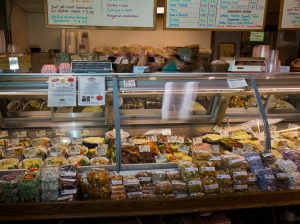 Steve and his father decided to start carrying artisanal American cheeses in the store after Mike Gingrich of Uplands Cheese won the American Cheese Society’s Best of Show Award for Pleasant Ridge Reserve, and today, the cheese counter with its 200 to 300 cheeses in it is a destination for travelers who come to Larry’s Market just to buy their cheese.
Steve and his father decided to start carrying artisanal American cheeses in the store after Mike Gingrich of Uplands Cheese won the American Cheese Society’s Best of Show Award for Pleasant Ridge Reserve, and today, the cheese counter with its 200 to 300 cheeses in it is a destination for travelers who come to Larry’s Market just to buy their cheese.
Most of the business rung up by the store’s 15 full and regular part-time employees, though, comes either at lunchtime or through the store’s catering business. The regular Friday grill-out events are also huge draws that bring 250 to 300 people into the store over the course of a couple of hours.
All told, the deli and catering departments represent about 60 to 70 percent of the business today. “We do a lot of corporate catering, so on any given day, we’ll have five people out delivering, and we can do 400 to 500 people for lunch, just catering,” Peterson said.
The typical lunchtime purchase for the 100 to 150 people who usually come in then is about $12 to $15, although customers will frequently spend $40 to $50 at a time if they’re also buying groceries and cheese. Among the most popular offerings are killer brownies, Wisconsin artisan cheeses and fresh soups, including the turkey chili that’s a particular favorite among Larry’s regulars. “We sell a ton of soup, summer and winter,” Peterson said. “Our local health inspector comes in for lunch quite often.”
